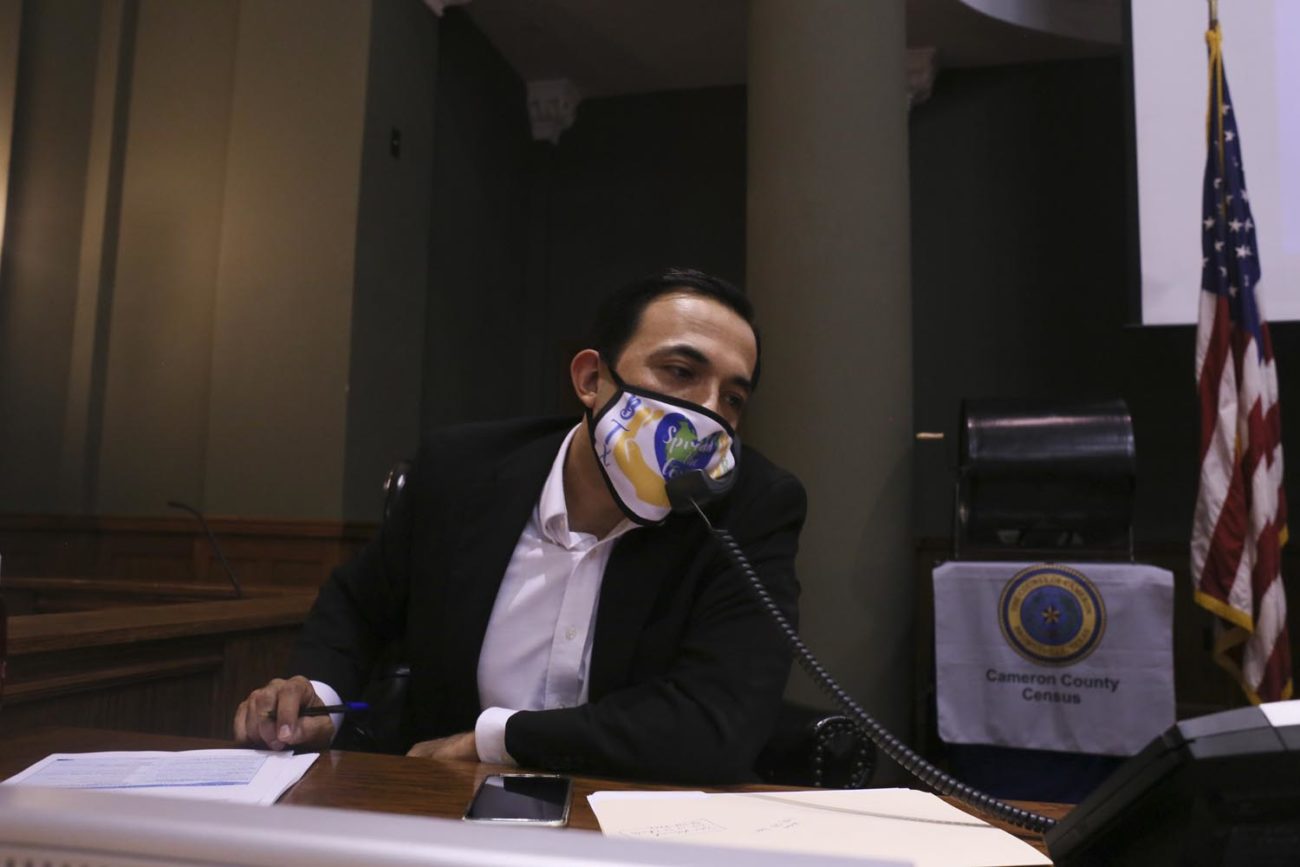Every 10 years the constitutionally mandated U.S. census takes place, and every 10 years nearly half of Cameron County’s population neglects or refuses to be counted.
Each person not counted in the census equals about $1,600 in federal dollars the county will not receive over the next decade for things like low-income health services, hospitals, roads, bridges, schools, libraries and emergency services, since those funds are distributed to counties by the state based on population.
The county was planning to pull out all the stops for the 2020 Census before the pandemic hit, hobbling the effort to get residents to answer the questionnaire by mail, phone or online. Still, Sylvia Garza-Perez, county clerk and lead organizer of the county’s census events, said officials are doing everything they can to drive participation in the final days of the count despite complications from the pandemic.
The latest event as part of that drive was a county-hosted census telethon Monday at the Dancy Building, an effort to highlight the 2020 count in its final days, answer questions the public might have, and get people counted.
“The point of today is to make sure we get everybody in Cameron County counted,” county Judge Eddie Treviño Jr. said at the start of the telethon.
He said the county started working on its 2020 Census efforts about four years ago and that “when the pandemic hit in the spring it really, really messed up our plans.”
Brownsville had a 58 percent response rate as of Monday compared to 66.3 in 2010, while Harlingen was 54.2 percent on Monday compared to 62.3 percent in 2010. The statewide response rate stood at 61.7 percent. Idaho and West Virginia had the best response rates in the nation, tied at 99.8 percent.
Garza-Perez said she didn’t know if the census events in recent weeks, and those planned for later this week, would be enough to get the county to where it was in 2010, at 56.5 percent.
“I wish I could tell you,” she said. “I don’t know. I worked on Friday. I worked yesterday. We have an event today. We have another event on Thursday. It’s just nonstop right now.”
The original U.S. Census Bureau deadline for census offices nationwide to wrap up their enumerating of households was July 31, but due to the pandemic the deadline was pushed back to the end of October. Then in early August, the Census Bureau changed its mind, announcing the deadline was being moved up a month to Sept. 30. Despite calls from elected officials around the country to re-extend the deadline to Oct. 31, the Census Bureau so far has not budged. Treviño said it’s extremely important for all of South Texas, the state and the country to get an accurate count.
“So far, as we sit here today on Sept. 21, we’ve only got nine days left to finish out this census,” Treviño said.
Garza-Perez said the earlier deadline is hurting the county and the country as a whole, and that most of the census workers here are actually leaving before the end of the month.
“I know that Saturday is the last day for the majority of the census workers,” she said. “They’re going to be gone. It’s their last day, on the 26th. I don’t know how we plan to continue without that support, which I think that’s not good for the state to do that. Because now who are we going to count on?”
Garza-Perez said the historically low response rate in Cameron County is likely due to more than one factor, including households being worried about revealing their immigration status — even though the census questionnaire contains no questions whatsoever about immigration status, as officials have stressed for months.
“It’s a combination of a lot of things, people not being informed,” she said. “The immigration status, as well, frightens people. … I don’t know if people are really not paying attention to what’s going or if they’re ignoring it.”
Garza-Perez said she also thinks that some people don’t understand participation in the census as being a “civic obligation.” She said the chronic undercount impacts the county in concrete ways, noting that while the county’s population is officially considered to be below 500,000, in reality it’s probably greater than that.
“When you saw disbursement of the CARES Act money, you saw that those counties that are metropolitan counties, that have over 500,000, the money went directly to them,” Garza-Perez said. “Whereas in Cameron County, because we were below that threshold, the money goes to the state, then the state says this is how much we’re going to give you. That’s the difference.”
Meanwhile, the county is doing everything it can to bring the numbers up to at least 2010 levels, she said, and presented a final pitch to the public.
“If we don’t do this together and we don’t unite to get these numbers we’ll be paying the price for the next 10 years,” she said. “It’ll be a difficult time, especially when we’re trying to get a lot of new business into our area. … Whatever we have lost because of the pandemic, it will impact us for the next 10 years until we’re able to get a recount again.”
FOR MORE INFORMATION VISIT www.census.gov









